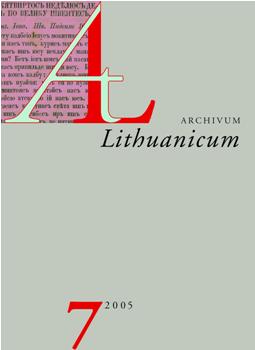Trisdešimt šeši Aukso altoriaus maldaknygės leidimai (1885-1907): santykis su bendrinės kalbos raida
Thirty six editions of the prayer book Aukso altoriaus (Golden Altar; 1885-1907) and the development of the standard Lithuanian
Author(s): Jurgita VenckienėSubject(s): Christian Theology and Religion, Theoretical Linguistics, Historical Linguistics, Lithuanian Literature, Baltic Languages
Published by: Lietuvių Kalbos Institutas
Keywords: Prayer book; Aukso altoriaus; Golden Altar; Standard Lithuanian;
Summary/Abstract: This article covers thirty six editions of Serafinas Laurynas Kušeliauskas' (1820-1889) Aukso Altorius (a Lithuanian Catholic prayer-book), which were printed in the years 1879 to 1907. The Catholic Church in Lithuania was developing its written standardized variety from the sixteenth century on. Nevertheless at the end of the nineteenth century the language of religious texts was subject to the impact of the norms of the developing "secular" Lithuanian standard. The article raises the question as to why orthographical, phonetic, and certain morphological norms were changing slower in the prayer-books than in some other genres. The oldest surviving edition of the prayer-book Aukso altorius was published in 1885. This edition encompassed certain Lowland Lithuanian and certain Northern West Highland Lithuanian dialectal forms (from the Ðiauliai region). In later editions these forms were gradually substituted for Southern West Highland dialectal equivalents. Traditionally it was believed that the language of various publications (prayer-books among them) was influenced by the prestigious secular periodicals. However, the newspaper Aušra was not necessarily prestigious for the editors of the prayer-books, and their intention to use the Southern West Highland dialect for writing might have occurred relatively independently. Still, those periodicals which were published after Aušra ceased to exist (after 1886) and which used this dialect quite consistently might have impacted to a certain degree the transition of the prayer-books to the more Southern West Highland dialectal forms, especially in the last decade of the nineteenth century and in the beginning of the twentieth.
Journal: Archivum Lithuanicum
- Issue Year: 2005
- Issue No: 07
- Page Range: 93-122
- Page Count: 30
- Language: Lithuanian

